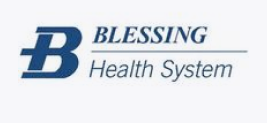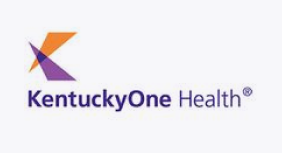May 2, 2022
The Financial Burden of GI Infusions

GI infusions for diseases like Crohn’s Disease are often required monthly and can be financially burdensome to patients. QCSS removes the financial burden from the patient by managing the entire copay card process.
Patient Background
Many patients we assist are dealing with chronic conditions requiring expensive medical treatment. This patient has been diagnosed with Crohn’s disease of the small and large intestines with complications. Crohn’s disease is an inflammatory disease affecting the digestive tract and currently does not have a cure. Infusion drugs can help manage the disease symptoms, but the treatment is expensive – even with insurance.
Financial Toxicity of Treatment Costs
Mr. R is a 22-year-old recent graduate just entering the workforce. He is still on his parent’s insurance plan, so his dad assists him with his medical care and decisions. His insurance plan has an out-of-pocket (OOP) maximum of $6,000 that he is responsible for paying annually. He is getting monthly infusions and will be accountable for each infusion’s OOP expenses up to his $6,000 insurance maximum. His first infusion had an OOP expense of $2,857.20, and his second had an OOP expense of $666.68.
The QCSS Copay Card Solution
Mr. R’s father called to discuss how Q Consulting Support Services (QCSS) could assist them with his son’s OOP expenses related to his Remicade infusions. QCSS’s Financial Advocacy team explained that we would immediately enroll Mr. R in the Remicade Copay Card Program. Moving forward, we will manage the reimbursement process from initial claim submission to receipt of payment directly to the provider’s office. Mr. R’s father could not believe what he was hearing and was highly appreciative of the services we offer, free of charge, through the hospital infusion center. The patient’s father said, “I know we have only been speaking for 8-minutes, but I think you are going to be my new best friend.” With one conversation, QCSS was able to save this family over $3,500.
The Typical Copay Card Reimbursement Process
A typical pharmacy copay card requires less patient involvement. The patient gives the copay card to the pharmacy, the pharmacy bills the insurance first, and then applies any remaining balances to the copay card. In contrast, the copay card process for infusion treatments can be burdensome and complicated – this is where QCSS steps in.
Usually, after a patient like Mr. R receives treatment at an infusion center, the practice will bill the patient’s insurance, and the insurance carrier processes the bill. As a result, the carrier generates an Explanation of Benefits (EOB), indicating payment to the provider and informing the patient of any OOP responsibility.
Each copay card program is different; however, the process for claim submission is generally the same. The patient has a certain amount of time to submit the EOB to the copay card program to secure the copay card payment benefit. The patient is then responsible for submitting the EOB, and many patients do not know what this is or where to find it. To ensure the claim is processed correctly, the patient must include the following information:
- Reimbursement Claim Form
- Patient Demographics
- Name of the insurance provider & Member ID
- Facility Name, Provider Name, and NPI number
- Date of Service (DOS)
- Name of drug or J-code
- Amount billed, allowed amount, the amount paid to the provider, and patient responsibility.
- Claim Form
- UB4
- CMS 1500 HCFA
- Explanation of Benefits
Once the patient has gathered the claim information, the patient submits the claim by fax, mail, or online portal to the copay card program. Upon submission, the program verifies the claim. The copay card payment is processed – processing time can vary between hours, days, and weeks – regular phone calls to the copay card company are required to ensure the claim is processing correctly, and no further action is required.
After the payment is approved, the program releases the funds via check or credit card payment. If this process is not convoluted enough, the patient is responsible for coordinating payment to the provider. Suppose the payment is loaded to a credit card. In that case, the patient is responsible for calling the provider, giving them the date of service and amount due, then providing them the card information to process the payment. If the program issues a check payment, the patient can coordinate with the copay card company to have the check sent directly to the provider. It is then the responsibility of the patient to ensure payment is received and applied to their account.
Improving Patient Satisfaction
Mr. R was thrilled with the services provided by QCSS on behalf of the infusion center. QCSS manages the entire process – we identify EOBs with patient OOP expenses, then submit them to the copay card manufacturer on the patient’s behalf, and monitor processing to ensure payment is approved. If the program generates a check payment, we notify the provider of the check number and amount paid. If the program loads the payment to a copay card, QCSS communicates with the provider’s billing office and has them process the charge. QCSS updates Mr. R throughout the process, and any decision that is not in our patient’s favor is appealed and rectified. Our approach is entirely seamless, relieving the patient of this burden while ensuring payment is received for their bills– which is why the provider’s office loves the service!











